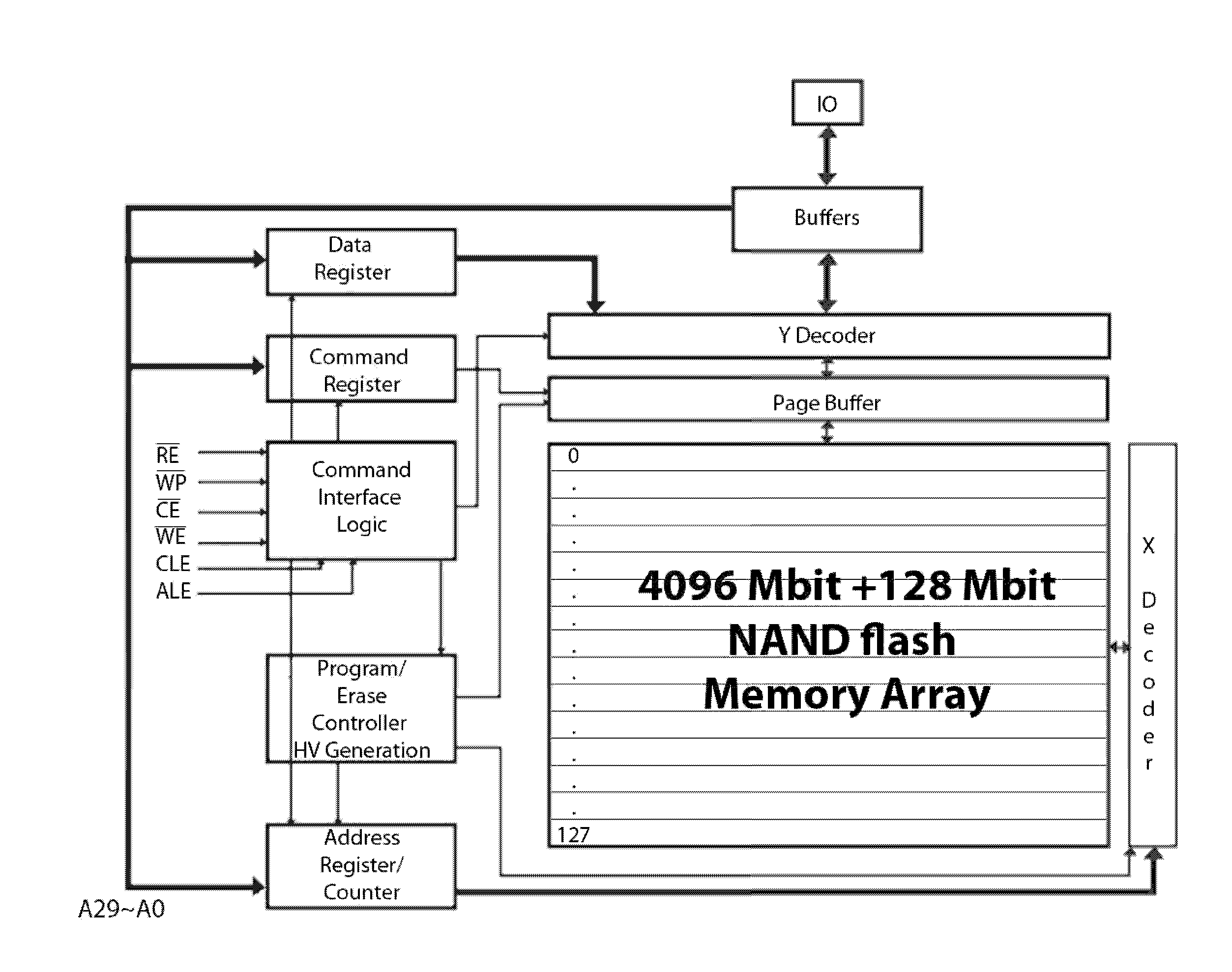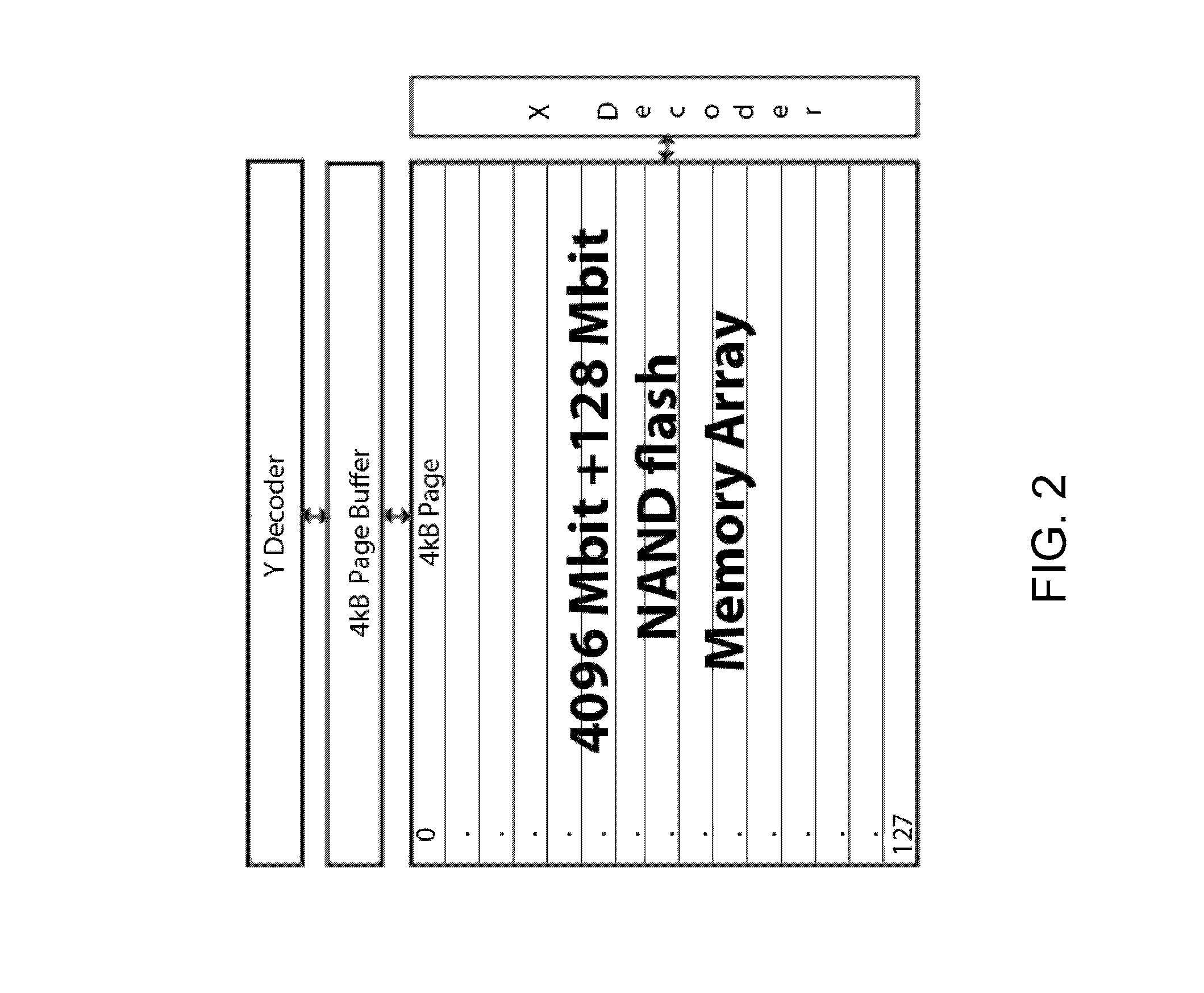Page-buffer management of non-volatile memory-based mass storage devices
a mass storage device and memory-based technology, applied in the field of memory devices, can solve the problems of data traffic involving more than a single monolithic ic, poor utilization of the actual capacity of the drive, waste of precious bandwidth, etc., and achieve the effect of increasing access speed and providing flexibility
- Summary
- Abstract
- Description
- Claims
- Application Information
AI Technical Summary
Benefits of technology
Problems solved by technology
Method used
Image
Examples
Embodiment Construction
[0041]Though the present invention is generally directed to non-volatile memory-based mass storage devices, for example, solid-state drives (SSDs), that are capable of using a variety of non-volatile solid-state memory devices, the following discussion will refer specifically to mass storage devices that make use of NAND flash memory devices, in part because NAND flash memory is a non volatile memory at extremely low cost per Byte, which makes it extremely suitable for use in mass storage devices.
[0042]The internal architecture of NAND flash memory devices causes a few functional idiosyncrasies, for example, data always are written and read in the form of entire pages, a plurality of which forms a block, which in turn is the smallest functional unit for erasing data. For the purpose of the current invention, the organization of NAND flash memory devices into pages as the smallest functional unit for read and write accesses is particularly relevant.
[0043]Most modern file systems use ...
PUM
 Login to View More
Login to View More Abstract
Description
Claims
Application Information
 Login to View More
Login to View More - R&D
- Intellectual Property
- Life Sciences
- Materials
- Tech Scout
- Unparalleled Data Quality
- Higher Quality Content
- 60% Fewer Hallucinations
Browse by: Latest US Patents, China's latest patents, Technical Efficacy Thesaurus, Application Domain, Technology Topic, Popular Technical Reports.
© 2025 PatSnap. All rights reserved.Legal|Privacy policy|Modern Slavery Act Transparency Statement|Sitemap|About US| Contact US: help@patsnap.com



